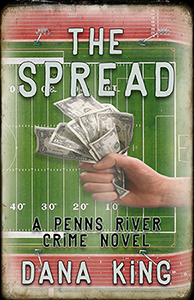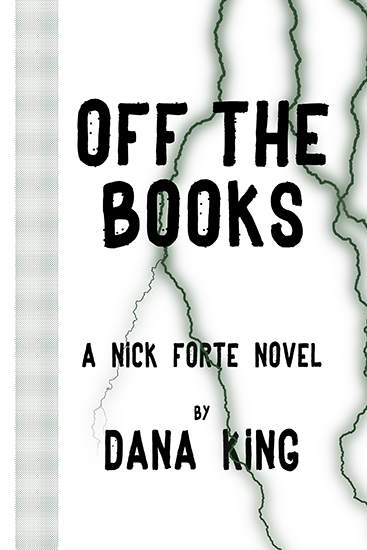I first
encountered Jim Winter when I read Road
Rules, a speedy trip from Cleveland to Savannah with a carload of dope the
guys driving don’t know is there, though it seems everyone else in the world
does. I moved to Northcoast Shakedown,
featuring his recurring PI character Nick Kepler, and is as well done a look at
insurance scams as I’ve read.
Jim was born
in Cleveland and moved to Cincinnati to, as he puts it, “marry the love of his
life;” seventeen years later he met her, and the rest is history. His newest is
a Kepler novella, Gypsy’s
Kiss.
One Bite at a Time: Tell us about Gypsy’s Kiss.
 Jim Winter: Gypsy’s
Kiss is a novella that brings Nick Kepler’s story to a close. It brings
back Gypsy from the story “Roofies” and has her leaving the sex trade for good.
Only someone wants to get even with her for some perceived or real slight.
Jim Winter: Gypsy’s
Kiss is a novella that brings Nick Kepler’s story to a close. It brings
back Gypsy from the story “Roofies” and has her leaving the sex trade for good.
Only someone wants to get even with her for some perceived or real slight.
OBAAT: Where did you get this idea, and
what made it worth developing for you? (Notice I didn’t ask “Where do you get
your ideas?” I was careful to ask where you got this idea.)
JW: When I wrote “Roofies,” I noticed that Gypsy had
developed feelings for Nick that he either didn’t notice or chose to ignore. I
hit on the idea that Gypsy would express this by asking Nick to be her final
client. I wrote a short story based on the idea, but didn’t like it, so I
expanded it and decided this would also be the end of the series.
OBAAT: How long did it take to write Gypsy’s Kiss, start to finish?
JW: The current version, which is a 14,000-word novella,
took about three weeks to draft. I did several revisions and had it professionally
edited. The final edits took about three weeks as well.
OBAAT: Where did Kepler come from? In what
ways is he like, and unlike, you?
JW: I came up with Kepler in the late 1990s. I had an
earlier character by that name, but could never get it to work, so I developed
my freelance insurance investigator instead. Like his creator, he doesn’t
really like fads very much unless it’s something that makes his life better.
Like he probably jumped on iPods before most people, but he didn’t like our
national obsession with oversized gas-sucking cars early in the last decade.
Unlike me, I think he’s horrible with women. Not to them. He loves women. But
his decisions as to which ones to be with are a bit questionable.
OBAAT: In what time and place is Gypsy’s Kiss set? How important is the
setting to the book as a whole?
JW: Since the original novels were written and set in early
2000s Cleveland, I set this one in the spring of 2005. That keeps the events of
Bad Religion recent enough to have
consequences, yet it also has Nick heading to New Orleans mere months before
Hurricane Katrina.
OBAAT: How did Gypsy’s Kiss come to be published?
JW: Since it’s so short, I decided this would be my last
original independent offering. I’ll still do short stories for now, but with a
novel passing back and forth between me and an agent, I decided it was time to
end the series.
OBAAT: What kinds of stories do you like to
read? Who are your favorite authors, in or out of that area?
JW: It varies. I read a lot of history and biographies. For
fiction, I divide my TBR stack between crime and science fiction. (Editor’s
Note: Jim did an excellent series of reviews of presidential biographies on his
blog, Edged in Blue. If you’re
interested in presidential history, these are well worth going back for. I know
I felt bad we hadn’t had more presidents when he finished the series.)
OBAAT: Who are your greatest influences?
(Not necessarily writers. Filmmakers, other artists, whoever you think has had
a major impact on your writing.)
JW: Stephen King was a huge influence on me for the way he
creates a sense of place. His Maine does not exist, and yet many people can
tell you how to get to Castle Rock better than Google can tell you how to get
around your hometown.
OBAAT: Do you outline or fly by the seat of
you pants? Do you even wear pants when you write?
JW: It depends. Gypsy’s
Kiss is a short, short work, so outlining really doesn’t work. For longer
work, I try to outline. There’s no way to keep track of where you’re going
without it.
OBAAT: Give us an idea of your process. Do
you edit as you go? Throw anything into a first draft knowing the hard work is
in the revisions? Something in between?
JW: I draft, and I try to power through the first draft. If
I go back after getting an idea, I lose momentum. Then I let a story sit in the
drawer and go off and work on something else. There was a novel I finished in
the spring of last year I haven’t looked at, although I try to get back to a
first draft much faster.
OBAAT: If you could give a novice writer a
single piece of advice, what would it be?
JW: As soon as you finish the first story, start the next.
Always have something to work on.
 OBAAT: If you could have written any book
of the past hundred years, what would it be, and what is it about that book you
admire most?
OBAAT: If you could have written any book
of the past hundred years, what would it be, and what is it about that book you
admire most?
JW: I wish I could have written Mystic River. That was the novel that gave me the push to write the
novel I’m working on with an agent now.
OBAAT: Favorite activity when you’re not
reading or writing.
JW: I’m finishing up the degree I should have had when I was
22, so right now, writing sort of is my break.
OBAAT: What are you working on now?
JW: I am putting the final (for now) revisions together on Holland Bay for an agent I’ve been
talking to. It’s sort of The Wire
meets 87th Precinct.








